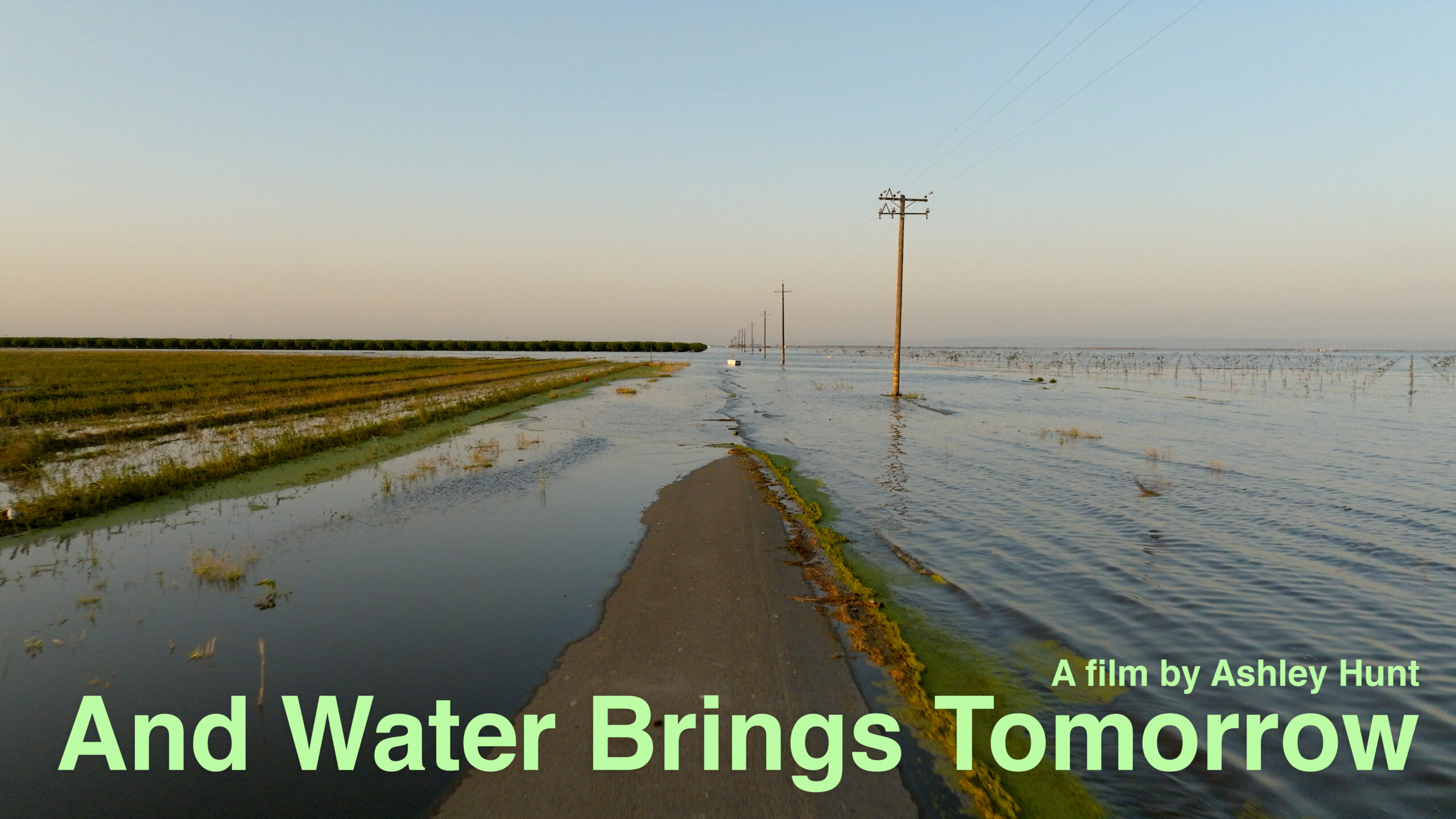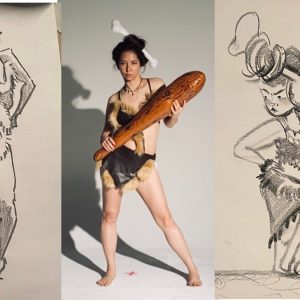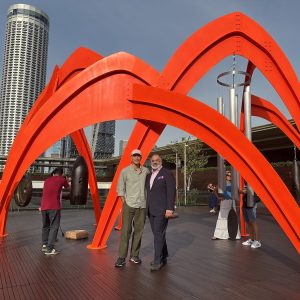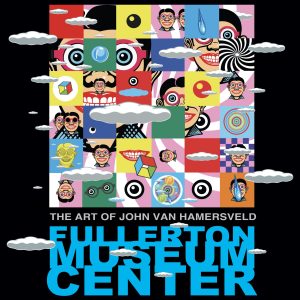Ashley Hunt, faculty in CalArts’ Photography and Media program, has spent more than two decades using film, writing, and collaborative practice to examine the prison system, mass incarceration, and the political landscapes that surround them. His work moves fluidly between exhibitions, grassroots organizing, and public conversations—bridging art and activism without treating them as separate spheres.
In an interview with 24700, Hunt talks about his latest film, And Water Brings Tomorrow, the third in a series exploring how communities reimagine the futures of prisons slated for closure. The conversation touches on climate change, touring the film to grassroots audiences, and his recent work with marine scientists for his installation piece Kaleidoscope.
24700: What inspired And Water Brings Tomorrow, and how does it relate to the earlier films?
Hunt: The two previous films—Ashes, Ashes (2020) and Double Time (2021)—both started with the idea of thinking about prisons as rooms: what grows out of the “room” of a prison. For this third piece, rather than focusing on a single prison, I looked at a national report surveying prisons that have been closed and repurposed since 2001. I thought: instead of one site, what if this film looked across many sites.
For example, the difference between a former prison that’s been turned into luxury housing versus one that’s become a transformative justice center and space for community organizing. A lot of the most interesting conversations following the film have centered on those differences. If we’re trying to imagine how carceral spaces can become less carceral, are there forms that don’t look like prisons but still participate in the same carceral economy—through gentrification or class dynamics?
With this piece, there’s also a grassroots tour that’s the second part of making the work. There’s the making of the film itself, and then cultivating a very intentional audience and discourse around it once it’s out in the world.
24700: When you started the film, were you already familiar with these different kinds of repurposed prisons, or was it more of an exploration?
Hunt: It was an exploration for me, too. The first two sites I visited were in New York. One was transformed from a men’s prison into a youth athletic center, and when I visited, I had this optimism because the prison was no longer functioning as a prison.
But the surrounding community was rural and very white. The prison had probably been one of the few places where people of color lived in that community. Now, all the kids playing soccer there were almost entirely white. It wasn’t bad that they were using the space, of course—but it felt gentrifying.
The second site was a former Staten Island prison that’s now a movie studio. All the fencing with concertina wire was still in place, but the signs changed from “Property of the State” to “Private Property.” The property relations shifted from state to private ownership. There’s often a sense of carceral tourism and sensationalism in how these spaces are used.
Chico’s Justice Center in Los Angeles was completely different. It’s a juvenile court and jail that’s been turned into a community hub for grassroots organizations. The contrast between that and sites like the movie studio is striking.
24700: Climate change is mentioned in the synopsis. What’s the connection?
Hunt: Good question. There are a couple. One emerged from the background context while I was making the work. Here in Southern California, we had those two years of atmospheric rivers—intense, unprecedented rains. During those atmospheric rivers, an incredible thing happened in Central California: Tulare Lake returned.
Historically, it was the largest freshwater lake west of the Mississippi, but it had been drained for agriculture. Two prisons were built on the dried lake bed. The rain systems overwhelmed the levees, and the lake came back. Farms flooded, prisons nearly flooded. For some people, this was a flood. But for many Indigenous communities, it was the return of the lake—the memory of the earth overcoming settler and carceral industries that had drained it.
Another connection came from a report called Hidden Hazards, created by researchers at UCLA’s Luskin School of Public Policy. It focuses on prisons in California that are under threat from climate hazards. For example, in the Central Valley, drought conditions in recent years have led to the spread of Valley Fever—a dangerous fungal infection carried by dust storms. It’s a major issue in prisons there. There are also heat risks from prolonged heat waves and air quality problems from illegal haze.
24700: What does the title of the film mean?
Hunt: Water functions in the film as both a destructive force—threatening carceral institutions—and a generative one, germinating what comes after their collapse. It also connected to ideas of grief and grieving. One of my starting points for the film was thinking about grief as an emotional force necessary to move past mass incarceration. There’s the direct grief experienced by communities harmed by incarceration, and the more abstract grief of losing the sense of safety people project onto the system. The film’s essayistic thread reflects on grief, landscape, history, and loss—asking: How do we let go of structures that have defined us? How do we imagine and build something else?
24700: Do your classes connect to the themes in your work?
Hunt: Yes. I’ve taught a course several times called Prisons, Systems, and Structures, which deals directly with those themes. But honestly, most of my classes engage with politics in some way—not “political art” with a capital P, but encouraging students to think about the politics embedded in their work. I find that framing useful for students. It helps them move past the false binary of “political vs. personal art” and recognize that the political is personal, and vice versa.
Right now, I’m teaching a graduate seminar in the Photo and Media program called Dangerous Ideas. We’re digging into ideas labeled “dangerous” during the Trump era—critical race theory, trans politics, gender theory—and examining both the attacks on those ideas and how they operate culturally. We talk about censorship, discourse, and strategies for responding. It’s been a rich and urgent class.

24700: And you have the Kaleidoscope piece in an exhibition right now too?
Hunt: Yes. Kaleidoscope is a 30–40 minute single-channel work commissioned for an exhibition called Weather and the Whale. It’s an amazing two-year project pairing artists with marine scientists at UC Santa Cruz.
Kaleidoscope became a more personal piece. It’s less directly “activist” in its use but still politically resonant. It takes the story of Jonah and the Whale as a starting point, looking at imprisonment in the belly of the beast through an abolitionist lens. The whale, the ocean, and the waters become metaphors for history. The piece connects colonial projects, trade, and climate through watery metaphors.
24700: Is there anything we didn’t touch on that you’d like to add?
Hunt: I’m really interested in how we, as artists and cultural workers, respond to this current moment of crisis—when artistic voices, universities, and institutions are under attack. I want my students to think not just about how to survive, but how to build the world we want. The connection between organizing and artistic work is that both are forms of world-building. The more we learn from each other, the stronger that work becomes.




One Response
Hello Ashley,
I am a CalArts grad – BFA77 MFA79 in world music.
I work for LA County Dept of Arts and Culture.
I am a program manager for over 20 arts agencies that deliver services in youth detention facilities.
I am interested in collaborating.
Thank you,
-gj